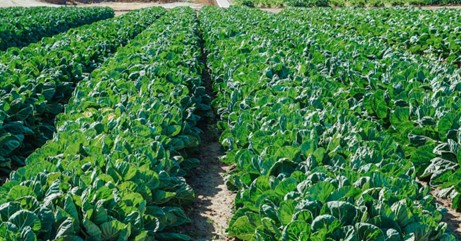Unlocking the Secrets of Soil Acidity: A Friendly Guide to Growing Thriving Crops
Understanding Soil Acidity: What You Need to Know
Soil acidity refers to the concentration of hydrogen ions in the soil, determining its pH level. A scale from 0 to 14 measures this, where 7 is neutral, numbers below 7 indicate acidity, and numbers above show alkalinity. Most crops thrive in a pH range of 6 to 7.5, but understanding your specific soil's acidity is crucial for optimal growth.
It's fascinating how soil acidity can significantly impact the availability of nutrients to plants. In highly acidic soils, essential nutrients like nitrogen, phosphorus, and potassium can become less accessible, affecting crop yields. Understanding this concept is key to making informed decisions about soil amendments and crop choices, ensuring you're nurturing healthy and productive farming grounds.
So, why is soil acidity such a big deal? Well, it affects everything from the microbial life in your soil to the types of plants that can thrive. By grasping the basics of soil pH, we're better equipped to tailor our farming practices to the unique needs of our land.


The Importance of Soil pH for Crop Growth
The pH level of your soil acts as a gatekeeper for nutrient availability. Crops rely on a balanced pH to absorb nutrients efficiently. When the soil is too acidic, nutrients can become locked away, leading to poor crop performance. This is why testing and adjusting pH is an essential step in any agricultural practice.
A balanced soil pH fosters an environment where beneficial microorganisms thrive. These tiny organisms play a pivotal role in breaking down organic matter, aiding nutrient availability, and improving soil structure. By maintaining the right pH balance, we're essentially creating a vibrant ecosystem that supports healthy plant growth.
Let's consider the broader implications: crops grown in well-balanced soil are more resistant to diseases and pests. They're also more resilient to environmental stresses, such as drought or excessive rainfall. By prioritizing soil pH, we set the stage for robust and productive harvests.
How to Test Soil Acidity: Simple Methods for Farmers
Testing soil acidity might sound daunting, but it's simpler than you think. There are several methods to consider, ranging from DIY approaches to professional soil tests. Understanding these options can empower you to regularly monitor your soil's health.
1. DIY Soil pH Kits: These are readily available at gardening stores. With a small soil sample and a few drops of solution, you can get a quick reading of your soil's pH. While not as precise as lab tests, they're a handy tool for on-the-spot assessments.
2. Professional Soil Testing Labs: For a more detailed analysis, sending soil samples to a lab can provide insights into nutrient levels, organic matter content, and pH. This comprehensive data allows for tailored soil management strategies.
3. Digital pH Meters: These devices offer a convenient and accurate way to measure soil pH. They're easy to use and can provide instant readings, making them a favorite among tech-savvy farmers.
Regular testing ensures you're aware of changes in pH levels over time, allowing you to make timely adjustments. By incorporating these testing methods into our routine, we become more attuned to the needs of our crops and can make informed decisions to optimize soil health.
The Effects of Soil Acidity on Nutrient Availability
Soil acidity directly impacts nutrient availability, influencing the overall health and productivity of crops. In acidic soils, nutrients like phosphorus and magnesium can bind to aluminum and iron, making them unavailable to plants. This nutrient lock-up can lead to deficiencies, stunted growth, and poor yields.
Understanding the relationship between pH and nutrient availability is crucial for effective soil management. As the soil becomes more acidic, essential nutrients may leach away, requiring us to supplement them through fertilizers or soil amendments. However, over-fertilizing can exacerbate acidity issues, highlighting the need for a balanced approach.
Moreover, highly acidic soils can hinder root development, limiting a plant's ability to access water and nutrients. By maintaining an optimal pH range, we facilitate root growth, ensuring plants have the resources they need to thrive. Recognizing these effects empowers us to take proactive steps in managing soil acidity.
Ameliorating Soil Acidity: Effective Techniques and Practices
Once we've identified acidic soils, the next step is to neutralize them. There are various techniques to consider, each with its own set of benefits and considerations. Let's explore some effective practices for ameliorating soil acidity.
· Lime Application: Lime is the most common amendment for raising soil pH. By applying agricultural lime (calcium carbonate), we can neutralize excess acidity, making nutrients more accessible. It's important to apply the correct amount based on soil tests to avoid over-liming.
· Organic Matter Addition: Incorporating organic matter, such as compost or well-rotted manure, can buffer soil pH levels. Organic material improves soil structure, enhances microbial activity, and gradually raises pH over time.
· Gypsum Application: While gypsum doesn't directly change pH, it can improve soil structure and enhance nutrient availability in acidic soils. It's particularly useful in heavy clay soils where compaction is an issue.
Choosing the right technique depends on factors like soil type, crop needs, and environmental conditions. By adopting these practices, we create a balanced soil environment that supports healthy crop growth and long-term soil fertility.


Choosing the Right Crops for Acidic Soil
Not all crops are created equal when it comes to tolerating acidic conditions. Some plants naturally thrive in lower pH environments, making them ideal choices for acidic soils. Let's explore some options that can flourish even when acidity levels run high.
· Blueberries: These delicious berries prefer acidic conditions and can be a great addition to your farm if the soil pH is below 5.5.
· Potatoes: Known for their adaptability, potatoes can tolerate a wide range of pH levels, including more acidic soils.
· Rhododendrons and Azaleas: If you're considering ornamental plants, these vibrant shrubs are well-suited to acidic conditions.
By selecting crops that naturally thrive in acidic soils, we can optimize yields and reduce the need for extensive soil amendments. This strategic approach allows us to work with nature, rather than against it, maximizing the productivity of our land.
Organic vs. Chemical Solutions: Managing Soil pH
When it comes to managing soil acidity, we have a choice between organic and chemical solutions. Each has its pros and cons, and understanding these can guide us in making informed decisions for our farming practices.
Organic Solutions
· Compost and Manure: These provide a natural way to improve soil structure and gradually raise pH. They enrich the soil with essential nutrients and enhance microbial activity.
· Organic Mulches: Applying organic mulches can help regulate soil temperature and moisture, reducing the need for chemical interventions.
Chemical Solutions
· Agricultural Lime: This is a quick and effective method for raising soil pH. However, it requires careful application to avoid over-liming.
· Sulfur: For soils that are too alkaline, sulfur can be used to lower pH, but it must be applied cautiously to prevent over-acidification.
Balancing organic and chemical solutions can provide the best of both worlds, ensuring soil health while meeting immediate pH adjustment needs. By considering the specific requirements of our crops and soil, we can craft a strategy that supports sustainable farming practices.
The Role of Cover Crops in Soil Health
Cover crops are an invaluable tool in maintaining and improving soil health. These crops, planted between regular growing seasons, offer a range of benefits that extend beyond mere soil pH management.
1. Nutrient Cycling: Cover crops like clover and vetch fix nitrogen in the soil, enhancing nutrient availability for subsequent crops. This natural fertilization process reduces the need for synthetic fertilizers.
2. Erosion Control: By providing ground cover, these crops prevent soil erosion, preserving topsoil and maintaining soil structure.
3. Weed Suppression: Cover crops compete with weeds for resources, reducing their growth and minimizing the need for herbicides.
4. Improving Soil Structure: The root systems of cover crops help break up compacted soil, enhancing water infiltration and promoting healthy root development for future crops.
By incorporating cover crops into our farming practices, we not only manage soil acidity but also support a holistic approach to soil health, ensuring a sustainable and productive agricultural system.
Monitoring and Maintaining Soil Acidity Over Time
Maintaining optimal soil acidity is an ongoing process that requires regular monitoring and adjustments. By keeping a close eye on pH levels, we can ensure our crops continue to thrive.
Steps for Monitoring and Maintenance
· Regular Soil Testing: Conduct soil tests at least once a year to track pH changes and nutrient levels. This data informs timely interventions.
· Record Keeping: Maintain detailed records of soil test results, amendments applied, and crop performance. This historical data helps identify trends and predict future needs.
· Adjusting Practices: Based on test results, adjust soil management practices, such as lime application or organic matter addition, to maintain desired pH levels.
· Continuous Learning: Stay informed about the latest research and techniques in soil management to adapt and refine practices.
By embracing a proactive approach to soil acidity management, we can ensure our crops receive the nutrients they need, fostering a thriving and sustainable agricultural environment.


Conclusion: Nurturing Healthy Crops Through Soil Management
In our journey through the secrets of soil acidity, we've uncovered the importance of understanding and managing soil pH for crop success. From testing soil conditions to choosing the right crops and implementing effective amendments, we've explored a range of strategies to enhance soil health and productivity.
By prioritizing soil management, we not only improve crop yields but also contribute to a sustainable agricultural future. Let's continue to embrace these practices, nurturing our land and ensuring thriving harvests for generations to come.
If you're ready to take the next step in optimizing your soil health, consider incorporating these strategies into your farming practices. By doing so, you're investing in the long-term success of your crops and the vitality of your land. Let's grow together!


